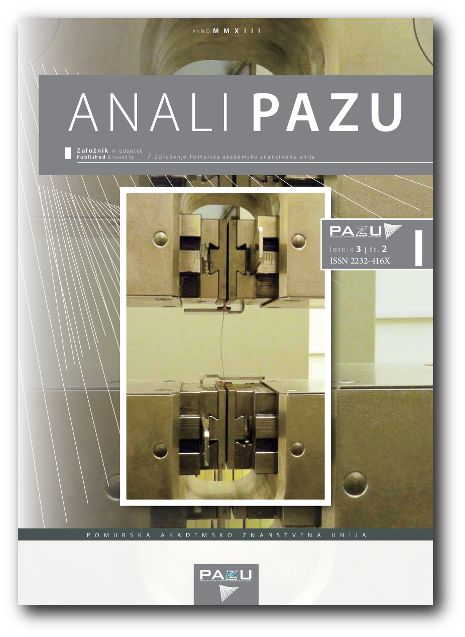Study of phase transitions and structural order in perturbed nematic liquid crystals
DOI:
https://doi.org/10.18690/analipazu.3.2.57-67.2013Keywords:
Lebwohl-Lasher model, nematic liquid crystals, disorder, memory effect, orientational orderAbstract
We studied the typical domain size and configuration character of randomly perturbed nematic liquid crystal system, or in general the system of rod-like objects which interact via a Lebwohl–Lasher-type interaction. We described their local direction with a headless unit director field. We introduced into the system the impurities of concentration p, which impose the random anisotropy field-type disorder to directors. We studied the domain-type pattern of molecules as a function of p, anchoring strength W between a neighboring director and impurity, temperature, and history of samples. In simulations, we quenched the directors either from the random or from homogeneous initial configuration. Our results show that a history of system strongly influences: i) the average domain coherence length; and ii) the range of orientational ordering in the system. In the random case, the obtained order is always short-range (SRO). On the contrary, in the homogeneous case, SRO is obtained only for strong enough anchoring W and large enough concentration p. In other cases, the ordering is either quasi long range (QLRO) or long range (LRO). We further studied field-induced memory effects for the random initial configuration. With increasing external ordering field, either QLRO or LRO is realized. This ordering is preserved even if the field is switched off, and its degree saturates for a large enough value of the field. Therefore, one can control the degree of global ordering and average domain coherence size by temporarily exposing the system to an external ordering field. Such systems could be exploited as soft matter based phase-memory devices.
